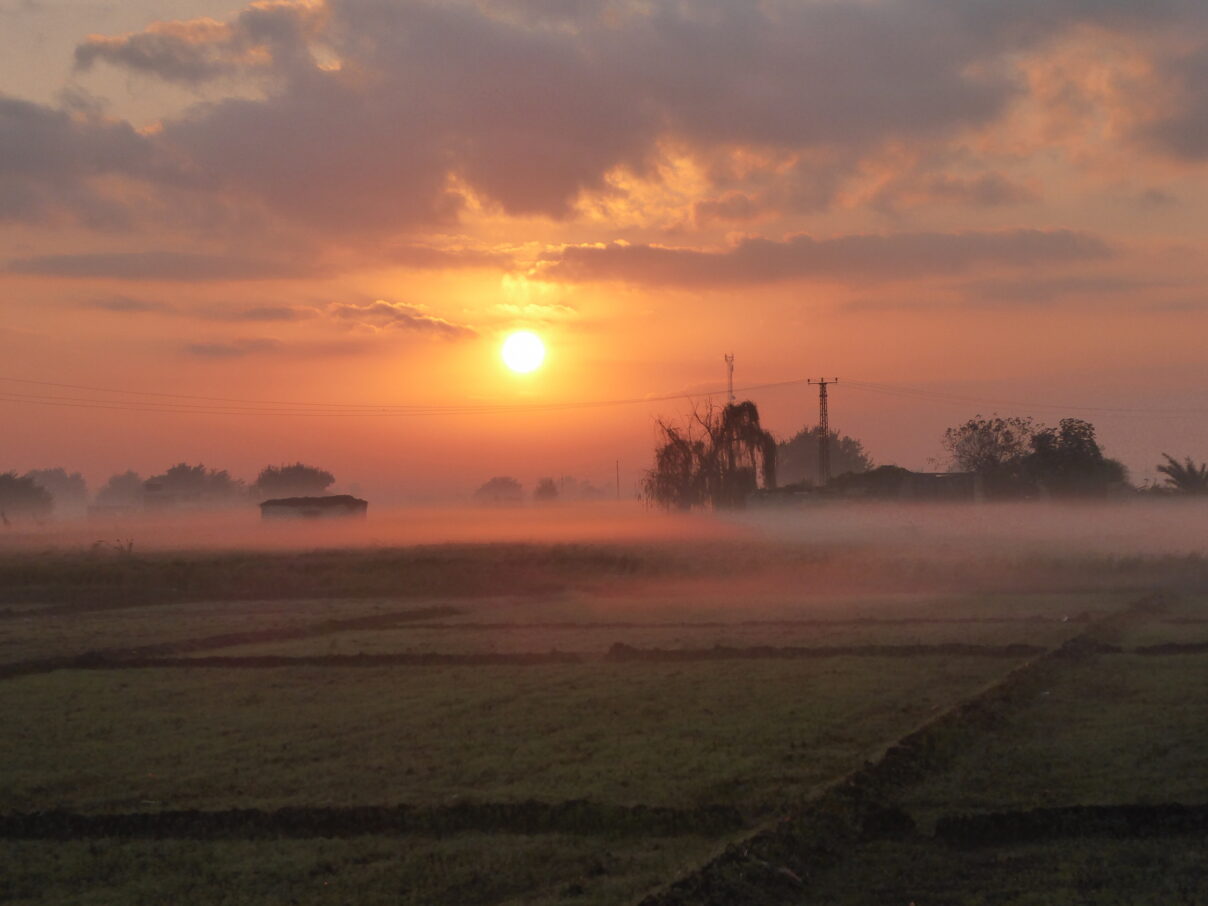Sais Report 2018
Season Reports
Introduction
The team was in the field from 9th September until 27th September 2018. The team members were : Dr Penelope Wilson (Field Director, Durham University), Sameh Youssri el Shamy (MoA), Esmeralda Lundius, Sarah Hitchens, Olivia Collier, Gracie Sharp, Daniel Elcoat, Emma Williams, Danyang Miao, Natasha Lavers, Caroline Schwarting, Mahmoud Ali Mahmoud (Conservator), Adel Mohamed Abd el Fatah, Atef Ismail El Kordy and Shaymaa Adel Ghoneim (Trainees). The Mission would like to thank the General Director Mimi Ibrahim in Tanta, Mrs Nashwa Gaber in the Foreign Missions office in Cairo as well as the tourist and local police in Tanta, Bassioun and Sa el Hagar who all provide a safe and welcoming environment in which to work. The Mission is also grateful to the El Bishe family for continuing to run our house and offer logistical support in the work. Our workforce were extremely helpful and worked hard in very hot conditions enabling our work to make good progress. They were led by Reda el Bishe and Esmaiein el Bishe.
The aim of the fieldwork was: (1) to complete the excavation in Kom Rebwa by reaching the base of the magazine context in Units 12, 15 and 17 in order to retrieve further amphorae and pottery fragments and to consolidate our understanding of the phases of the site and specific floor-level sequences; (2) the work also included an assessment of the fissure running across the site in order to discover whether it was a natural phenomenon or had been caused by subsidence or seismic activity; (3) collection of samples for environmental analysis by micromorphological techniques; (4) continued drill auger work.
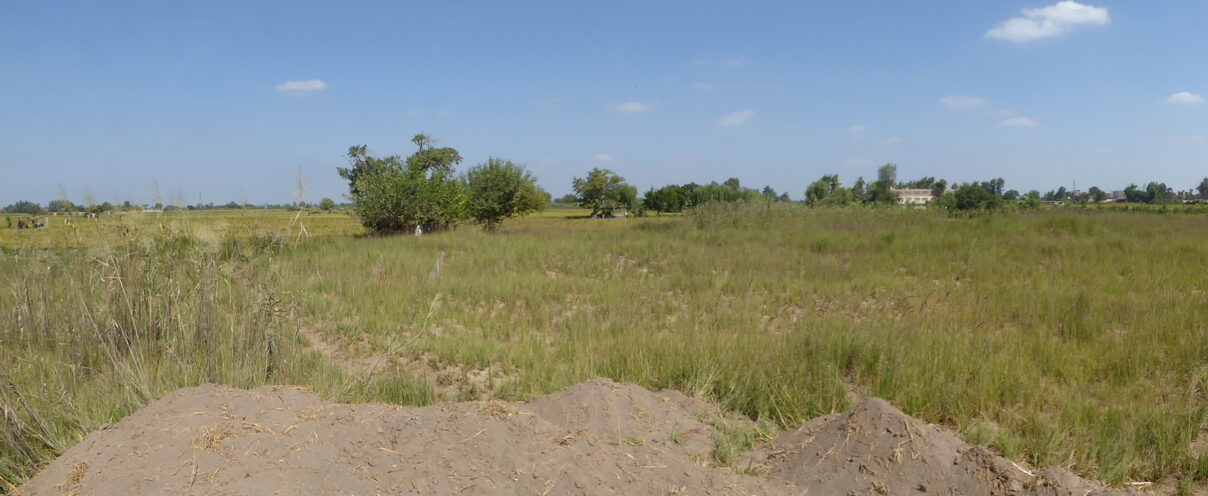
Fig. 1. Panorama of the north part of Kom Rebwa east.
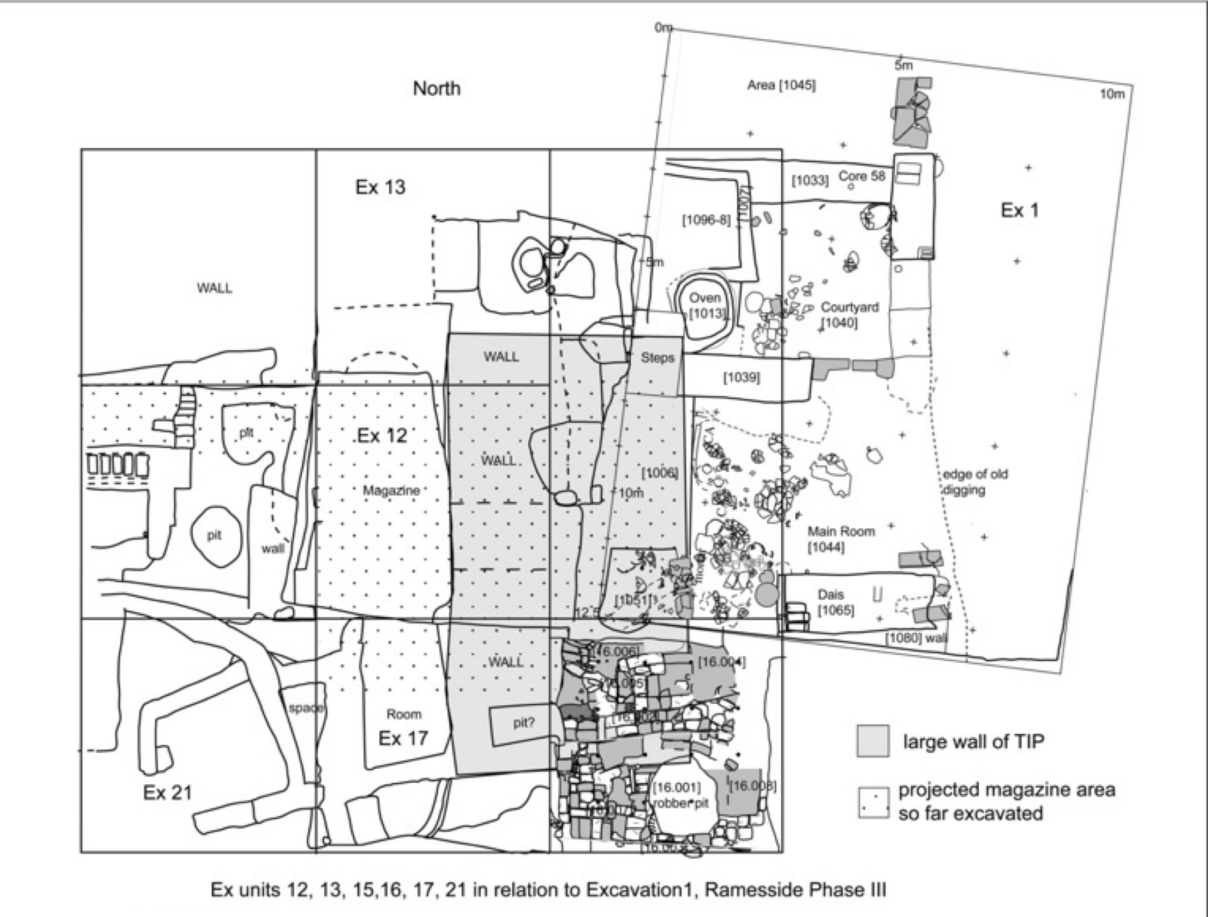
Fig. 2. Plan of the excavation area showing Ex 1 (first project), and the units 12-21 with TIP structures overlying Late Ramesside layers (it’s complicated!)
Fieldwork (see Fig. 2 above)
Unit 17: the area contained rooms from the Upper City (Third Intermediate Period) built against the large wall structure running north-south through the site [12.006]. The rooms had been partly removed at the northern end in order to excavate an amphora in 2017, and so in 2018 the walls of the upper phases were removed along with the first floor levels, distinctive because of the their white colour. This may have been due to decayed organic matting or a thin coating of whitewash. The walls were excavated in order to reach the layer of rubble and broken pottery, which lies between the top of the rubble from the magazine collapse and the first phases of the TIP structures. The pottery in this middle phase was characterised by being mostly coarsewares including pot-stands, platters and also a large, heavy-based bowl with finger marks in the inside of the base. Parts of the vessel had been found in 2016, 2017 and finally the last remaining pieces of the rim in 2018. The vessel was perhaps some kind of jar-stand, otherwise unattested.
In the upper layers of the rubble of the magazine which continued into Unit 17 and at least as far as the wall at the southern end, many fragments of small bowls and jars were found as well as some complete bowls, including the heavy ring-base type with internal ledge and ‘striped’ wash on the inside as well as painted lines (Fig. 3), and globular jars.
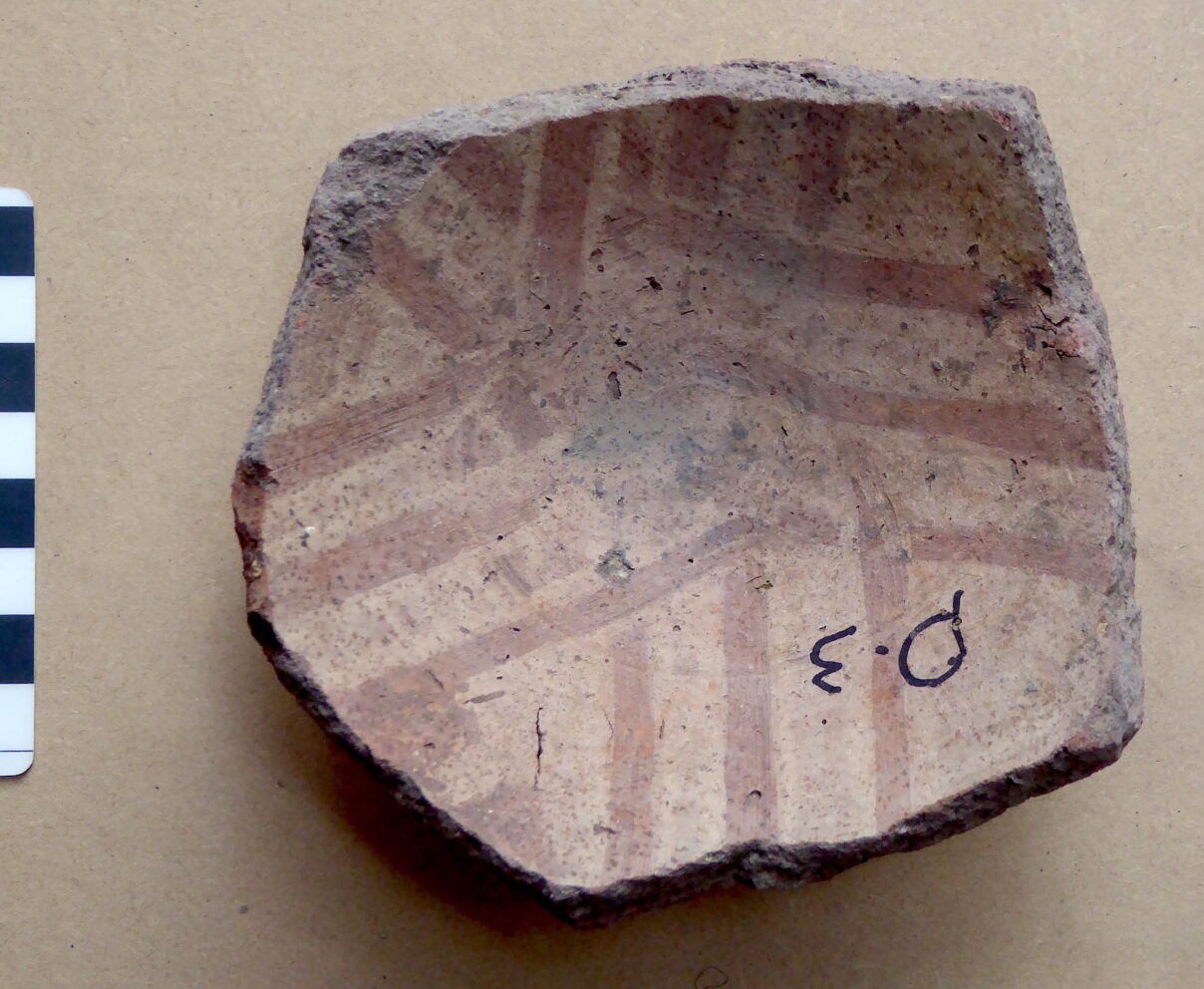
Fig. 3 Base of a bowl, inside with light orange coating and smeared lines of brown paint.
An intact flask was found in the rubble which made up the wall [17.030]. It was standing upright in the debris and was preserved because it was small and well made. The orange fabric suggests that it came from outside Egypt and may have been contemporary with the magazine phase of the site.
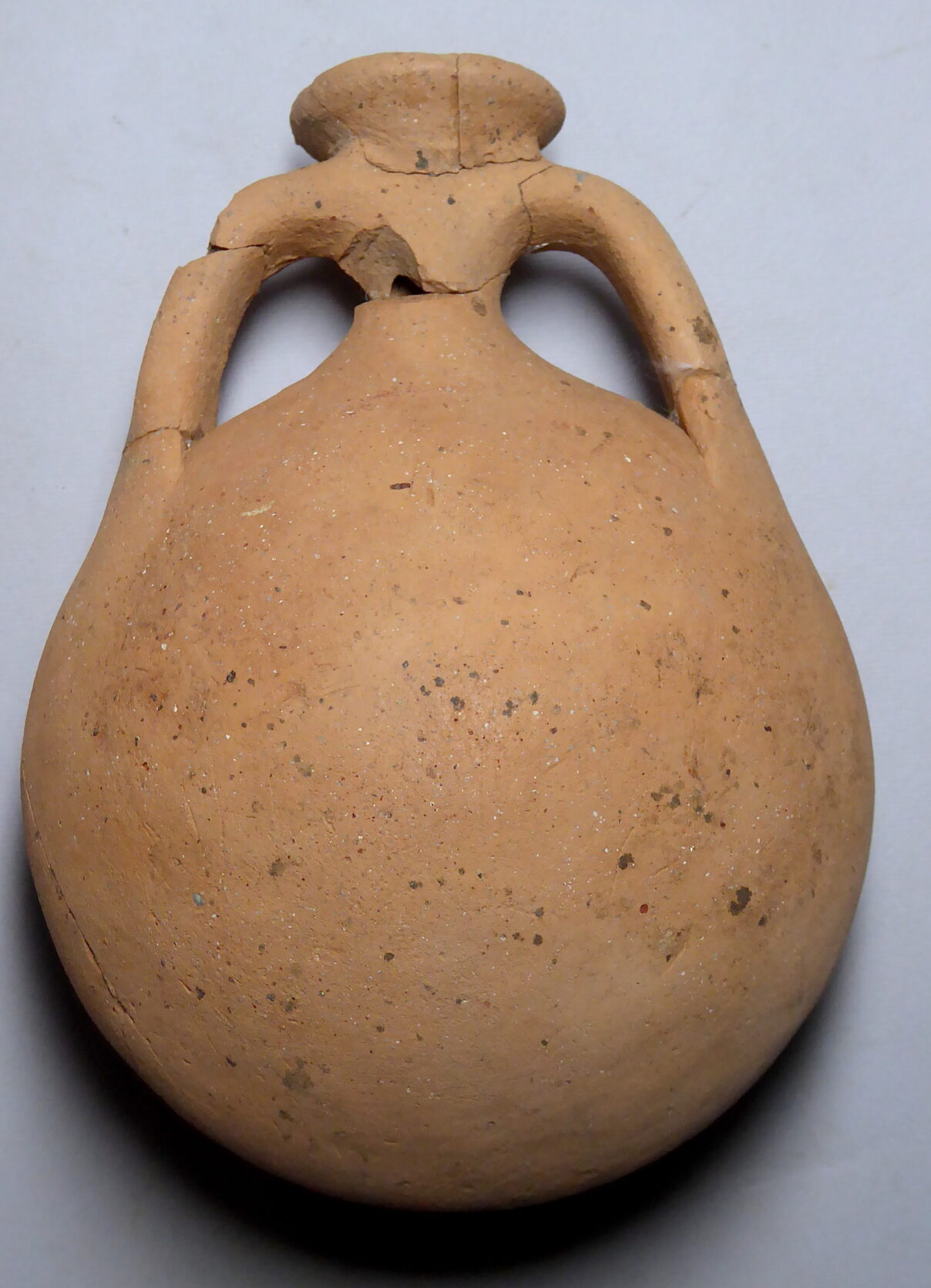
The rubble layer also contained a layer of intact pottery vessels and coarsewares which seemed to have been placed on top on the rubble of the magazine collapse, but was underneath the floor levels of the first occupation connected with the Great Wall. It may be that this early re-occupation of the site was connected with the reestablishment of the settlement and perhaps the workmen constructing the wall and associated rooms. The vessels found in this layer included a large red amphora, an internal ledged bowl with Tiger-stripe wash on the inside and a second red Nile silt jar.
In support of the idea that there was a construction phase for the new buildings, two interesting circular features were found in the levels between the collapse layers and the domestic quarters. They were approximately 25-30 cm in diameter, with a fill consisting of broken fragments of pottery and large and small pieces of limestone. There was also some mud, which may have flowed into the depression created by the fill. It is tempting to identify the circular features as post holes of some kind perhaps supporting temporary structures while the wall was being built or with supporting scaffolding for the wall. The two features were about 2m apart and had a depth of around 10-15 cm. They could have been the bases of posts or columns made of some organic material.
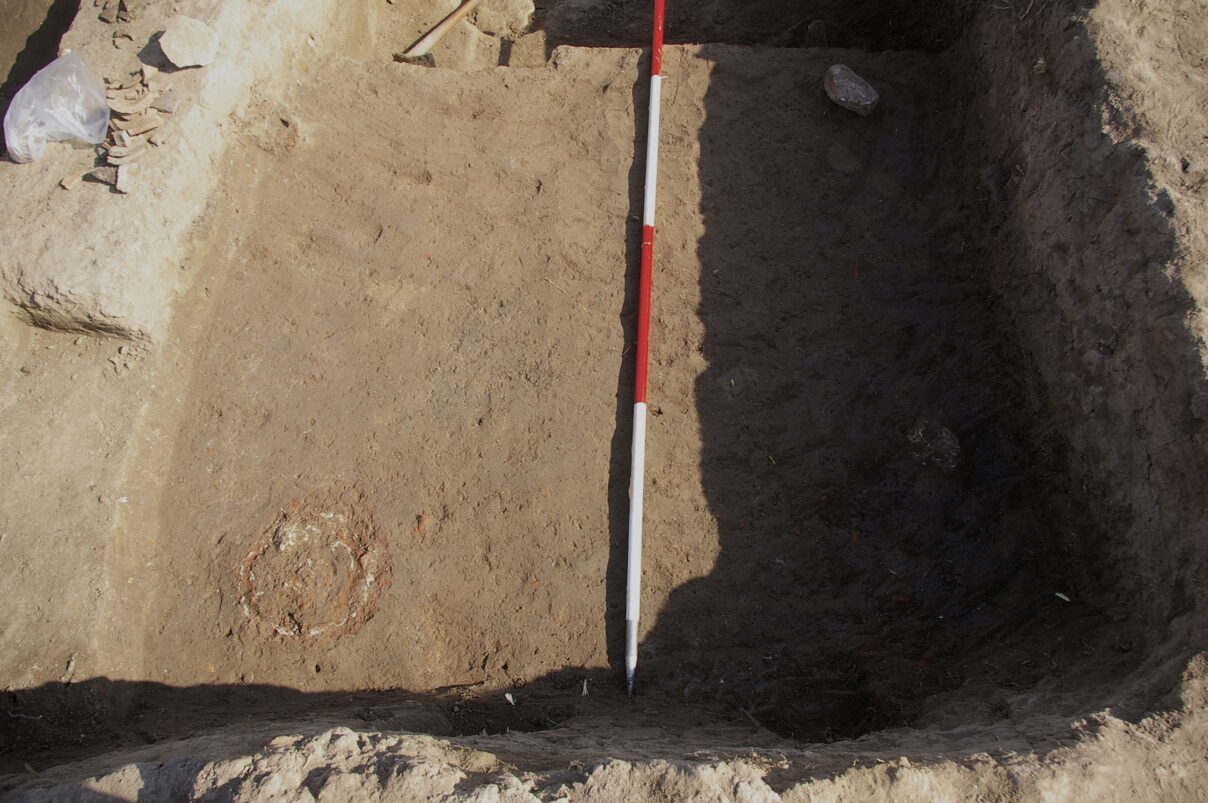
Fig. 5. Post-hole B in Ex unit 17: circular red and white area in the lower left of the image.
A further wall running north south was identified [17.036] which may have been associated with the magazine and some further brickwork which may have also formed some of the earlier structures.
The last floor level of the magazine was reached in Unit 17, where part of an amphora was found lying on the floor, the remainder probably having been disturbed during the wall construction. The vessel was lying upon a burnt layer, as well as green ashy material and south of it there was flint debitage in a depression in the ground, with a mud hearth to the north of it and some stones also associated with this layer, including a limestone fragment and an oolitic limestone flat stone, perhaps used as a grinder. Also in this area there was half of limestone mortar with a very smooth grinding place on the inside.
Unit 15
In 2014 the excavation had reached the magazine phase of the area in the northern part of the square and a pink, ashy-filled pit had been found in the south-eastern sector. In 2018 the upper walls and rubble fill were removed in order to find the remainder of the pottery that had been sealed down by the later construction of the wall [15.007] (Fig. 5). In doing so the following pottery vessels were found: a) Canaanite amphora pieces belonging to one found in 2014; b) a red amphora also complementing pieces found earlier; c) a large coarseware platter, tipped over on its side; d) a large reddish amphora for which half had been found in 2014 and reconstructed. The new fragments were used to reconstruct the vessel – a large ovoid amphora, with cream-light orange, stripey slip on the outside, but the neck and rim were missing. They may have been removed in order to reuse the vessel during its lifetime.
The pink-ashy material [15.011] was gradually emptied out of the feature and was found to be an oven, probably of domed form (Fig. 6). At the base was found a collapsed or integrated mud-base, with a mud layer around the oven of which a small section had been fired. The lack of black burnt material connected with the oven suggests that dung patties and chaff were burnt in it. In addition, a number of flint fragments were found in it, all burnt, suggesting they had been accidentally collected in the chaff/straw as fuel for the oven. A larger oven had been found in Excavation 1, suggesting that this oven and the storage area belonged to a separate unit within the magazine/kitchen/food preparation complex.
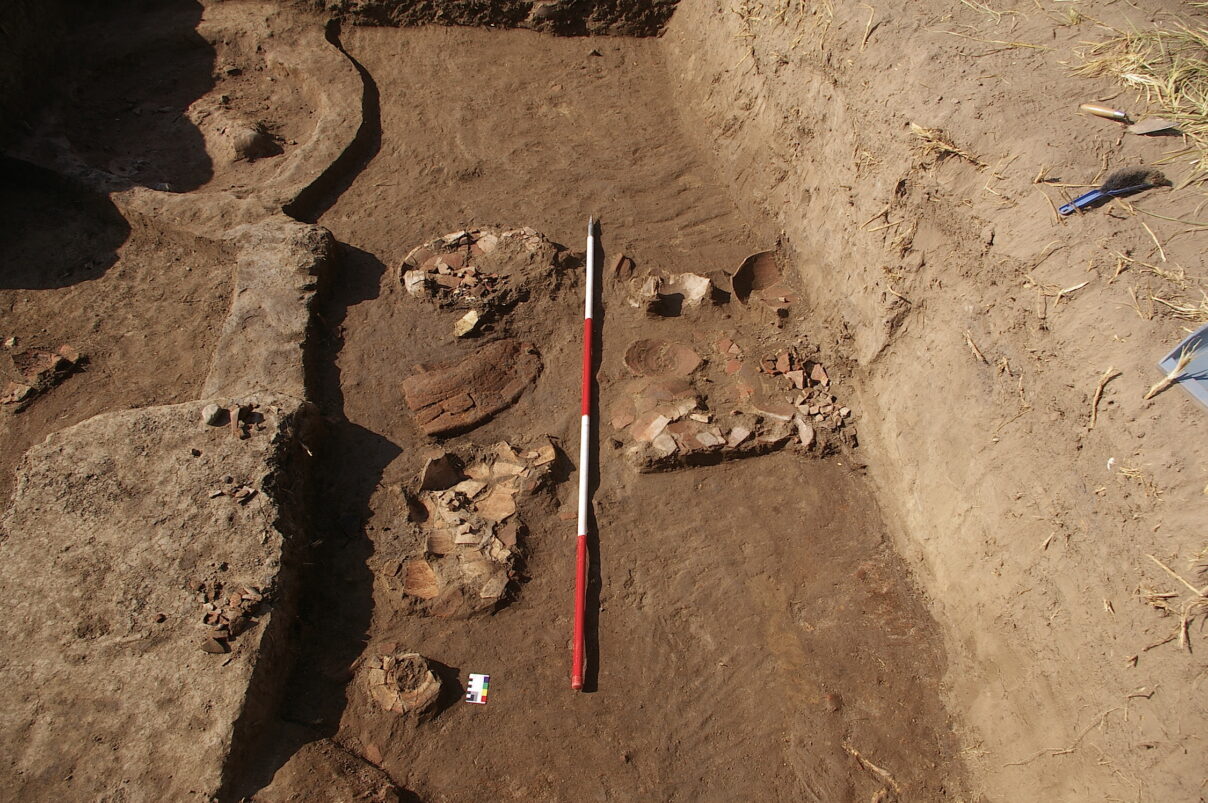
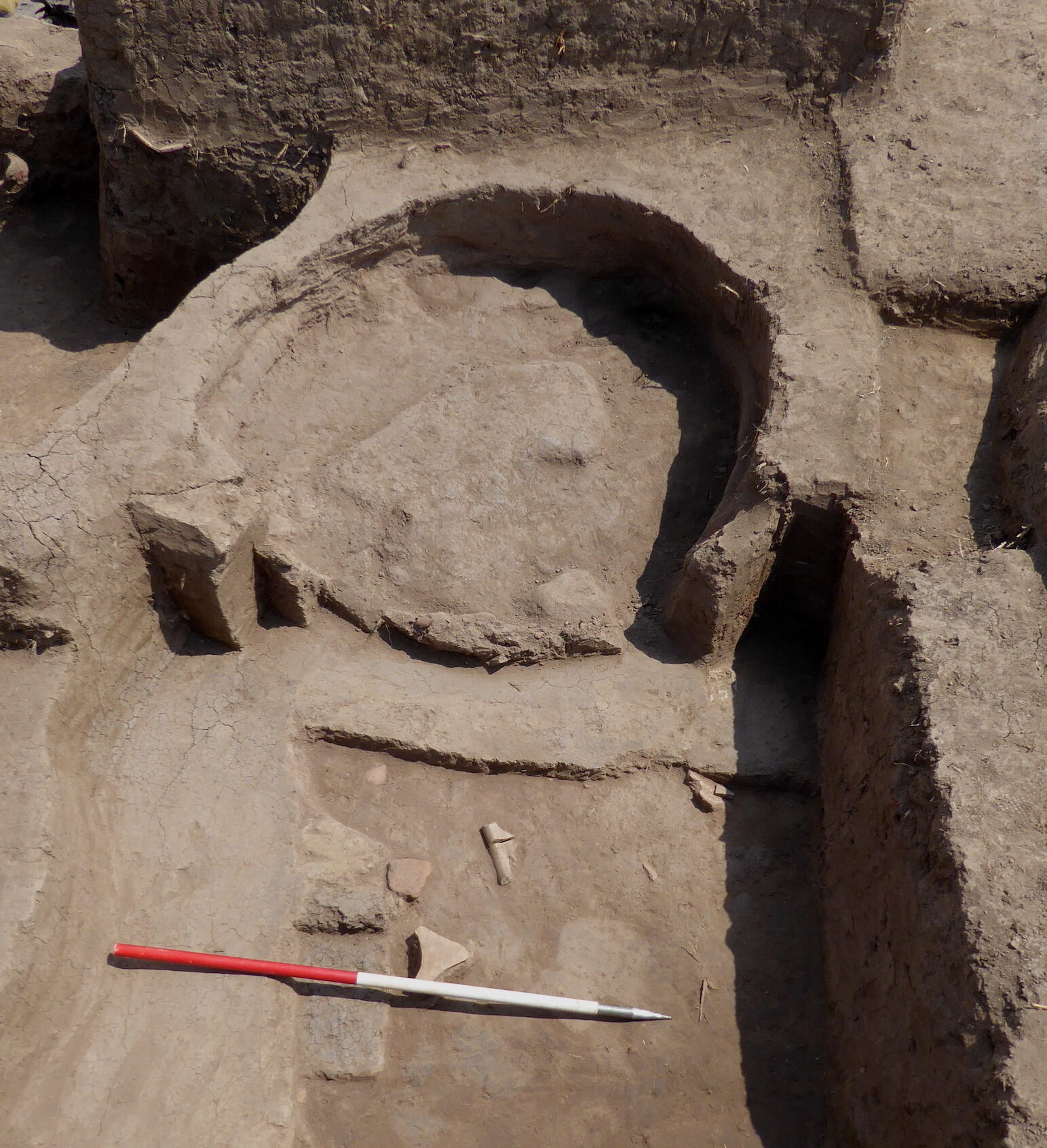
Unit 12
In order to allow a detailed analysis of the floor levels, two sections were cut through the floor of the magazine from the south-west sector of unit 12. They were approximately 50 cm by 20 cm and 60cm high. It is hoped that they can be analysed through micromorphology at some date in the future. In cutting the sections the floor levels were determined to be deep and complex, with many layers having been created over time. There were multiple floor layers with white or yellowish coloured surface coatings caused by decayed organic material and suggesting that the floors had been covered in matting. One surface was prepared with a layer of brick tiles that were then covered with something organic and upon which the hearths and mud-pot-stand emplacements were built. It was difficult to determine when the magazine structure had been first constructed because of the multiple floor levels, but there seemed to be a point at which the Great Wall stopped (with its layers of greyish mud brick) and then the earlier floor layers began (with reddish coloured brickwork).
A large amphora was found intact below the lowest levels of the floor however, and it may have standing in a specially constructed underground stand or a cellar. It seems to be covered in a white-cream coloured stripey wash and will be reconstructed whole in a future study season.
A number of flint blades and tools were found in the magazine debris, along with debitage from the manufacture of flint tools (Fig. 8). In addition there were whole bowls and other vessel fragments. Some of them can be reconstructed in future seasons, but otherwise the study of the fragments will enable a reconstruction of the types of vessel used in the magazine. There are also some fragments of older material from the late Old Kingdom and perhaps some older flint tool fragments, including one bifacial tool.
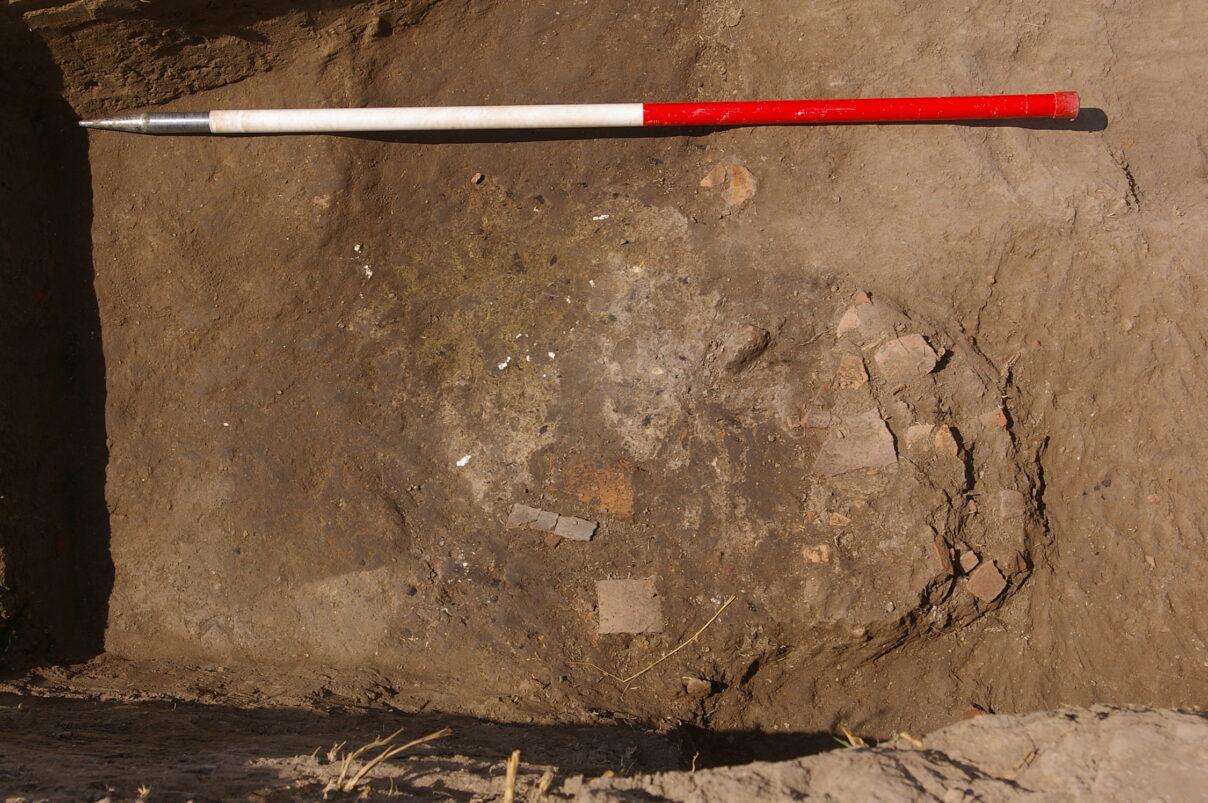
In the central area of the Unit, the crack or fissure running through the site, roughly east to west was clearly visible and a sondage was excavated down beside the fissure for a depth of 1m (Fig. 9). The crack continued below this depth and the roots of plants grew down the crack as it provided an easy route for the root growth. Similarly the side of the wall also seems to have provided an easy place for the roots of the grasses in the area to grow and they show that the wall also contributed to the disturbance of the magazine layers. The beginning of the crack is noted at the beginning of the magazine phase, so the idea that an earth tremor may have caused the collapse of the buildings is still tenable.
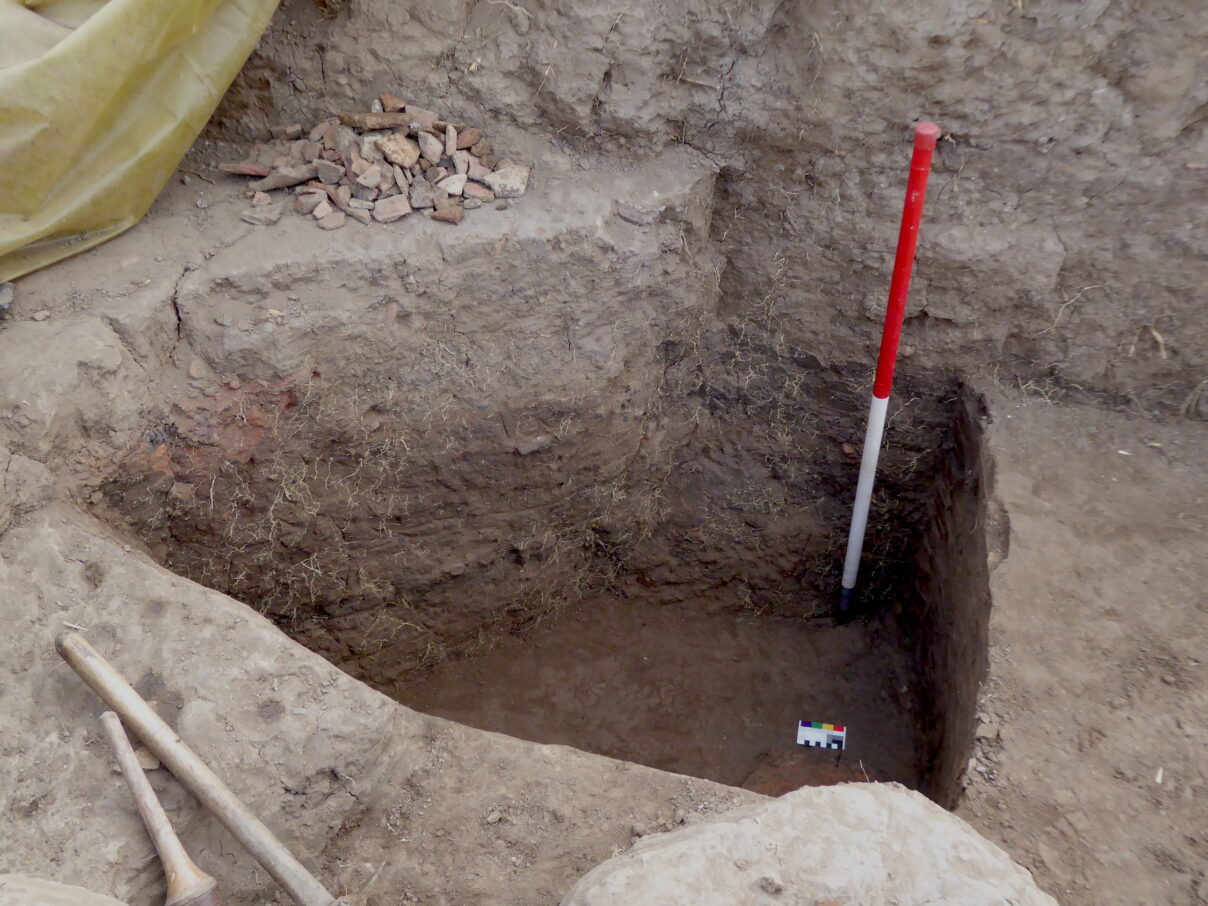
The Great Wall [12.006] itself seems to have been built upon a layer of thick mud bricks in a foundation trench dug into the rubble of the magazine. It also had footings to strengthen the base and the bricks were covered with a mud plaster. The wall was dug down to a homogeneous layer of red-brown soil which seems to predate the magazine layers which then went through several phases. The wall structure is massive with bricks around 50 cm in length, 20 cm wide and made of different kinds of material. The bricks vary from sandy yellow bricks, to clayey, grey-black bricks, to dark brown bricks but the main mass are made from alluvial mud mixed with small fragments of limestone and pottery, which create a strong mass in which it is very difficult to distinguish individual bricks. They can be compared with the bricks used to construct the walls of the Upper City in Units 17 and 21. They were made of alluvial mud with rubble added as well as fragments of pottery.
The extent of the magazine to the south is not yet confirmed but it seems likely that the wall on the western side was the original wall of this building. In this case, the magazine-like contents and the large oven, paralleling that in Excavation1, suggest that there are two ‘magazine’ units back-to-back in this specific area.
The relationship between the different structures is focused around the western wall of the magazine and it may be an older wall from the Ramesside building that was then reused in the Upper City to create an internal wall. This was confirmed in 2015 but in 2018 a complete amphora was found underneath the internal wall, suggesting that its upper phases post-dated the magazine collapse.
Pottery Study
The pottery from the work was sorted on site, then washed and further processed by recording. A small amount of drawing was completed and some of the larger amphorae were also drawn including one Canaanite Amphora, the large vessel from Unit 17, the white slipped vessel from Unit 15, globular funnel-necked jar buried in the floor of Unit 12 (Fig. 10) and the cream slipped orange amphora also from Unit 15. A large amount of reconstruction work remains to be completed as well as the detailed recording and drawing of the pottery from the last 5 seasons. This material has been collected together and is stored Under Study. The late Ramesside and Third Intermediate Period material is interesting because it offers an important opportunity to study the development of the city through its ceramic material, showing the changing context for the development of Sais.
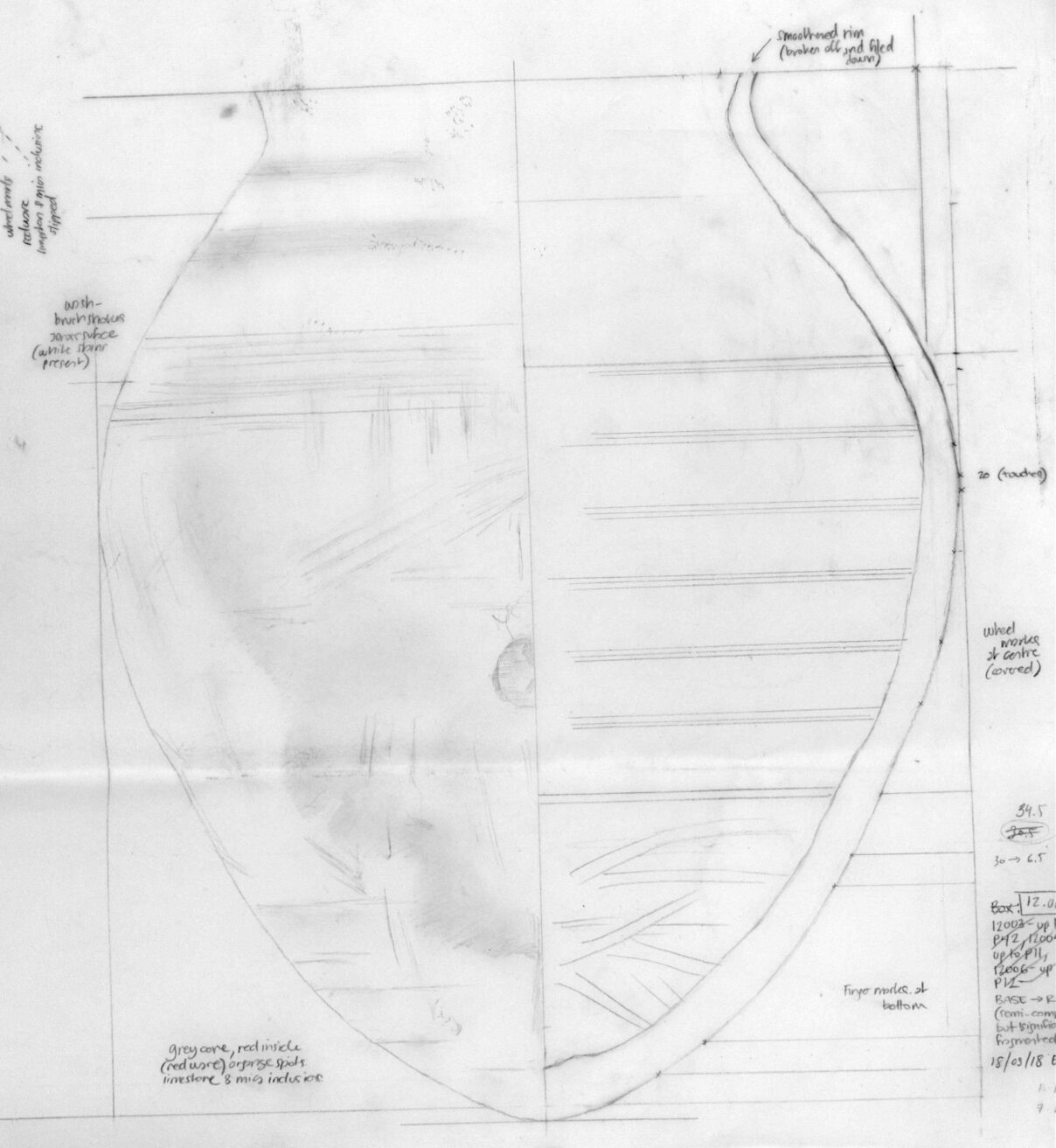
Small Finds
The registered pieces were: a ring; a black polished gaming piece; a cuboid weight perhaps made of basalt; a limestone weight or multi-functional object; a number of flint tools and cores; the complete flask. We also continued to find many fragments of cobra figures from the upper layers but also in contexts from the magazine rubble collapse. There were 10 in all from this season, to make a total of 134 from all seasons (Fig.11). Along with faience beads, flint tools – contemporary and older, weights, fragments of stone reused as tools, the material was kept for further study.
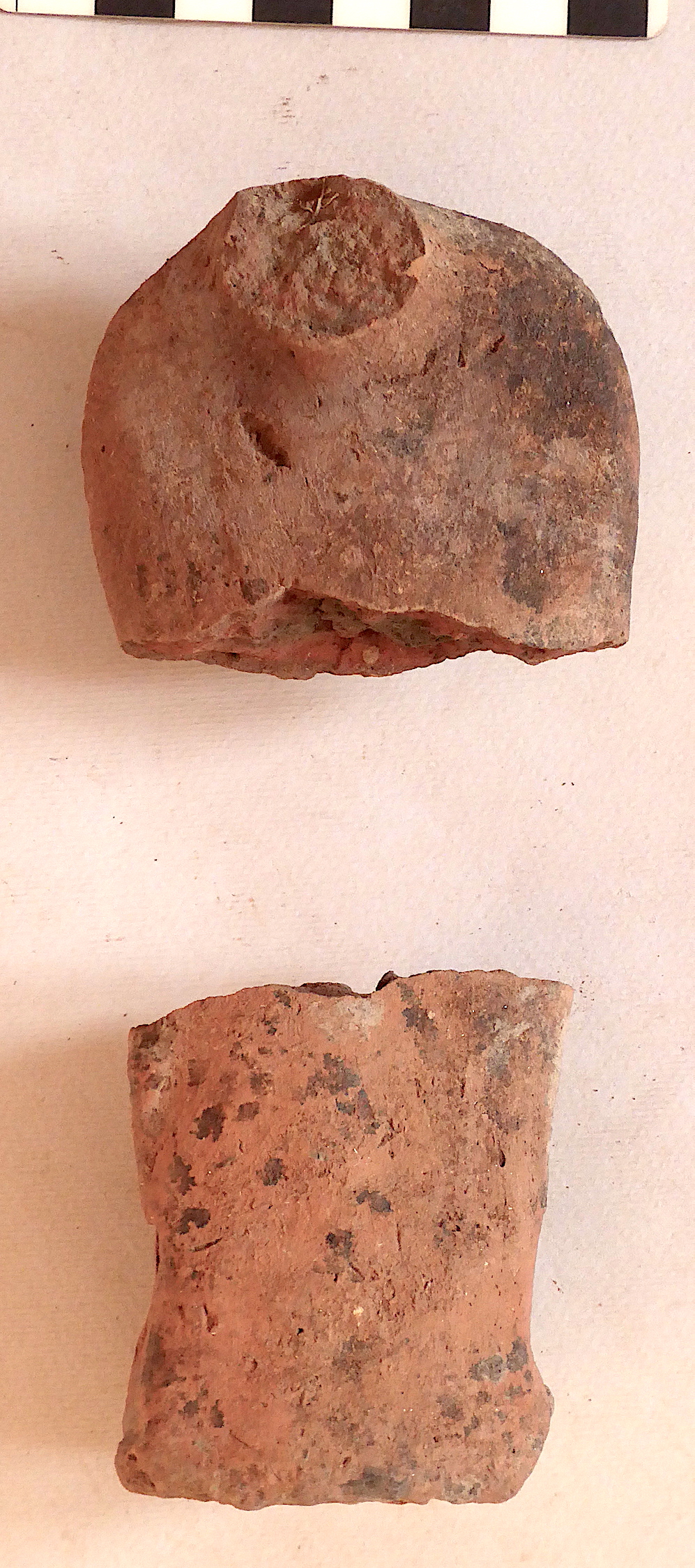
Drill Auger Work
The drill auger work continued in a transect of 8 auger holes from the river, across the Northern Enclosure to Kawady village. The aim was to fill in some gaps in our original drill core programme and especially to investigate the buried alluvial layer perhaps indicating a high flood regime at some point in the historical past. The material from Kawady was very interesting with deep settlement remains and it may be that one of the main area of the ancient city was originally located in this north-eastern area. The work was carried out under the supervision of Gracie Sharp and will be integrated into her research.
Summary
The short season allowed us to confirm the phasing of the site and to continue to make a detailed study of the time-depths and events that occurred during the lifetime of the magazine phase and then the later city during the beginning of the Third Intermediate Period. The pottery found will be an essential part of this process as it will provide a tight chronological sequence, although the presence of earlier material mixed in makes the process of identifying the pottery in use makes this a slow job. The complete vessels are however the most important aspect but their reconstruction and study is still only partly finished and will take further study seasons. The sections kept for micro morphological analysis also offer the opportunity to look at change and developments at a micro level of days and months as well of years (Fig.12). The significance of the site is that it allows a snapshot into the development of the city over a short period of time, but without inscriptional material and based only on cultural and environmental changes.
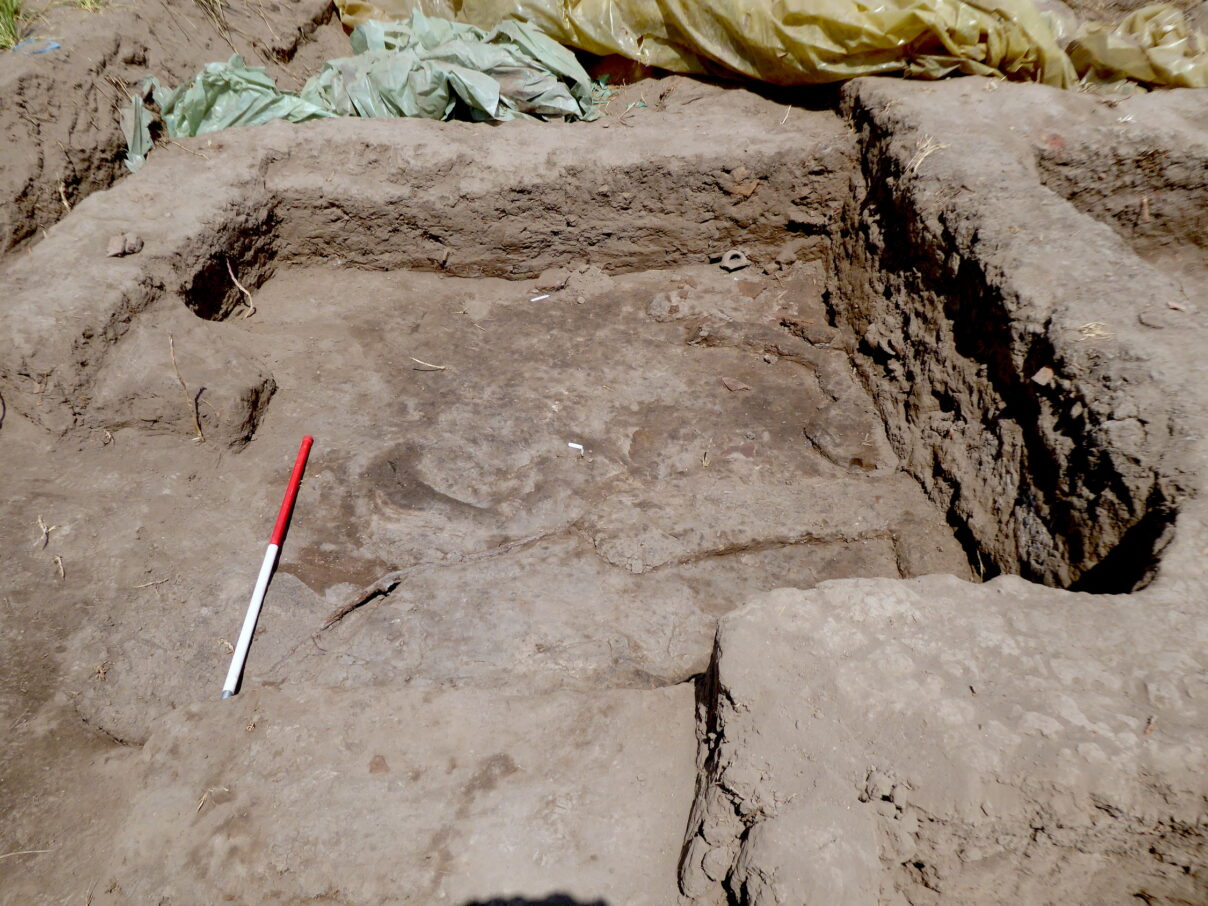
The name ‘magazine’ in the case of the structures found at the site does not just mean a place of storage but a place where food was processed and prepared from the raw commodities stored in the jars and amphorae of the magazine building. It may be that there in fact several of these food storage and preparation facilities and the questions remains as to whether they were solely serving a house or houses, or administrative centre or whether they were servicing the temple of Neith which stood nearby. The size and potential amount of storage facilities at the site suggest that if the magazines were banked one beside another that the potential provisioning capacity could have been large. Further work on the material will enable us to continue to research these questions.
